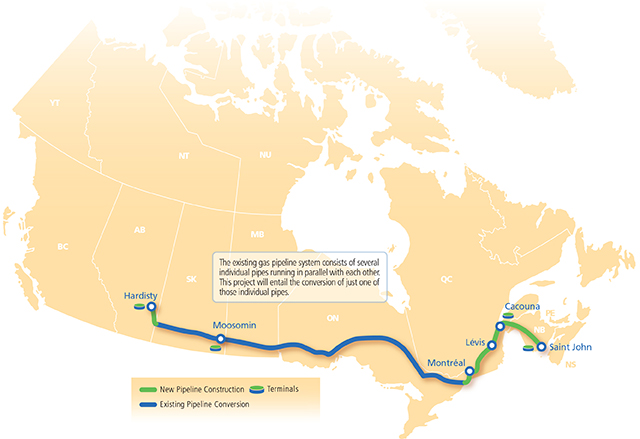The Obama administration has been delaying a decision on the Keystone XL pipeline for six years, partly as a result of a pressure campaign from environmental activists. But there is good reason to believe the opposition won’t matter in the long run. Even if Keystone XL is killed by the Obama administration, the Canadian tar sands will get to market by other means.
In the absence of a new pipeline, the immediate solution is more rail transport. Reuters reports that Canadian oil shipments to the U.S. surpassed 3 million barrels per day for the first time this week. That’s up 35 percent over the same time last year.
And the ramp up in rail transport is just getting started. The Canadian Association of Petroleum Producers tells Reuters that by the end of 2015 rail transport of crude from western Canada will reach 1 million barrels per day. For comparison purposes, the long delayed Keystone XL pipeline is intended to transport 830,000 barrels per day.
That’s not to say that Canada doesn’t need the Keystone XL pipeline. Rail transport can bring oil to foreign markets. Reuters notes that Suncor Energy recently shipped Canadian crude by rail to the east coast and from there to Europe. But it’s not the most efficient solution.
A more efficient solution is so-called Energy East. This massive 2,800 mile pipeline would take western Canadian crude to market on Canada’s east coast without crossing the U.S. border. In effect, it’s a way to bypass the veto power of President Obama.
Energy East would convert an existing natural gas pipeline, whichalready crosses about two-thirds of the distance to Canada’s east coast,to oil. With the construction of a additional stretches of pipeline toan existing port capable of loading super tankers, Canada’s crude wouldcome to the world market including Europe and India.
Construction of the $10 billion pipeline is still a few years away but there is already an agreement between the suppliers and the port on the east coast. What remains is approval from Quebec where the new portions of the pipeline would need to be built. But the jobs created and the potential for some of the oil to come to existing Quebec ports are a strong incentive to support the pipeline.
If completed, the Energy East pipeline would be capable of delivering 1.1 million barrels of crude to the coast per day, significantly more than the amount for the proposed Keystone XL pipeline. It would devastate the core contention made by environmentalists opposing the Keystone XL, i.e. that Canada will not produce western crude if it doesn’t have Keystone XL to take it to market. That’s almost certainly not true. Two-thirds of the pipeline to Canada’s east coast already exists and the rest could be built and in service by 2018.

COMMENTS
Please let us know if you're having issues with commenting.